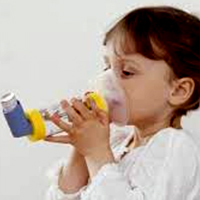Clinical guidelines on pediatric asthma exacerbation in emergency department, a narrative review

Accepted: 8 December 2019
HTML: 13
All claims expressed in this article are solely those of the authors and do not necessarily represent those of their affiliated organizations, or those of the publisher, the editors and the reviewers. Any product that may be evaluated in this article or claim that may be made by its manufacturer is not guaranteed or endorsed by the publisher.
Authors
Asthma has been known as a prevalent chronic-type inflammatory disease in children, because of their narrower respiratory airways. The present study aimed to identify guidelines for children asthma treatments. Extensive research was conducted on biomedical and pharmacological bibliographic database PubMed, EMBASE, MEDLINE, LILACS database, global independent network of Cochrane, Science Direct and global health library of Global Index Medicus. A comprehensive literature review was carried out using the terms Pediatric Asthma, epidemiology, management, and related clinical guidelines published from 2000 to 2019. After the primary assessment, quick diagnosis, clinical practice guidelines are useful tools for proper management of pediatric Asthma. By setting proper guidelines for this particular population, a higher improvement in quality of management of of pediatric Asthma is expected. Given the differences between the recommendations arisen by BTS/SIGN and NICE guidelines, critical comparison of the evidence-base guidelines provide suggestions that have more in common than what might seems at the first glance. The analysis of the variations presented in the present article will assist clinicians to make accurate decisions regarding their patients.
How to Cite
PAGEPress has chosen to apply the Creative Commons Attribution NonCommercial 4.0 International License (CC BY-NC 4.0) to all manuscripts to be published.
Similar Articles
- Sabina Saccomanno, Stefano Saran, Licia Coceani Paskay , Martina De Luca, Augusto Tricerri, Samuele Mafucci Orlandini, Francesca Greco, Giuseppe Messina, Risk factors and prevention of choking , European Journal of Translational Myology: Vol. 33 No. 4 (2023)
You may also start an advanced similarity search for this article.

 https://doi.org/10.4081/ejtm.2019.8682
https://doi.org/10.4081/ejtm.2019.8682



